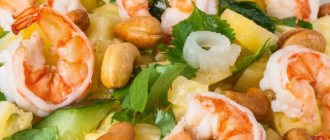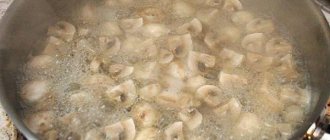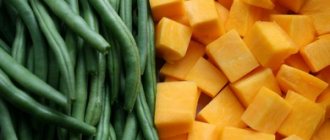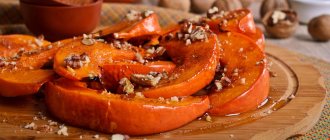Nigel Slater
THE CHRISTMAS CHRONICLES
Originally published in the English language by HarperCollins Publishers Ltd. under the title The Christmas Chronicles Text © Nigel Slater 2020 Location photographs © Nigel Slater 2020 Recipe photographs © Jonathan Lovekin 2017
Series “Cooking. Forks vs knives"
© IP Pukhov, translation, design, layout, 2018
© Design. Eksmo Publishing House LLC, 2019
* * *
Dedicated to James
who once told me: "You can grow old,
The main thing is, try not to become an adult.”
Autumn restructuring of the body
During the autumn months, our body prepares to operate in reduced energy consumption mode. First of all, this is expressed in a state of general depression and constant drowsiness. Efficiency also decreases and libido decreases, and even a strong-willed person wants to complain about life and eat something sweet.
There is no need to be afraid of such a state. In autumn, day after day, daylight hours decrease, which affects the decrease in the production of serotonin, the pleasure hormone, the lack of which in the body leads to a decrease in performance and the desire to perform any actions. There is also a lack of vitamin D, which has a bad effect on a person’s health - he becomes more tired, and since metabolism is disrupted, he inevitably gains excess weight. The period of such energetic passivity can be reduced to a couple of weeks if you switch to a winter diet in time, which has its own characteristics.
What is included in the winter menu?
LiveInternetLiveInternet
A winter menu for the week, hearty, which is very important in the winter cold, and varied, so that you don’t get bored in the kitchen preparing monotonous dishes, and your family gets not only the benefit, but also the pleasure of family breakfasts, lunches and dinners.
Housewives have come up with different options for menu planning. This includes rigid planning, when the menu is planned once for the whole week, for every meal. Like that:
Monday:
Breakfast - oatmeal, cutlet sandwich, coffee.
Lunch – fish soup, pies.
Dinner – vinaigrette, cutlets, mashed potatoes.
Flexible planning. With this planning, the housewife draws up an approximate list of different dishes for breakfast, lunch and dinner and, depending on the products that are in the house, desires and time, prepares these dishes.
For example, breakfast options:
Omelette with tomatoes;
Cottage cheese casserole;
Oatmeal with cheese;
Cheesecakes, etc.
Lunch options, dinner options. You need to write down everything that your family cooks and likes to eat. Give each member of your family a piece of paper with pencils and have them write down all their favorite dishes, then from these notes you can create a good menu.
There is another flexible menu option. Here you need to sort the list of dishes you are preparing into categories: soups, main courses, desserts, baked goods.
There is also a menu where the dishes are prepared to last for two days. That is, for example, on Monday you prepare only the first course and salad, and on Tuesday the second course and pastries - the first course and salad are left over from Monday. On Wednesday, the first course and salad are again, and the baked goods and the second course are left over from Tuesday. Perhaps such a menu will seem convenient to someone, but in my family this number will not work. Firstly, we do not eat reheated food, and secondly, there will simply be nothing to reheat.
Some people use a radial menu for two weeks, a month, five weeks, and so on. This is also very convenient planning for busy women who are not too keen on cooking, but who ardently want to feed their family deliciously and variedly. We will discuss the circular menu in the next menu for the week, because it is an interesting and necessary topic. And I offer you my family menu for the week, I hope you will find it interesting.
Winter menu – 2
Monday Breakfast - Fruit salad + sour cream + sugar. Hot sandwich with cheese and boiled sausage. Coffee. Lunch - Salad of grated carrots and sausage cheese in strips, with mayonnaise. Soup with dumplings (here). Sausages + Stewed cabbage. Dinner – Vinaigrette. Beef pilaf. Pear compote.
Tuesday Breakfast - Lazy dumplings. Coffee with milk. Lunch – Baked loaf with cheese and garlic (here). Soup - noodles with chicken. Cottage cheese bagels (here). Tea. Dinner - Grated carrots with garlic and mayonnaise. Beef goulash + Spaghetti. Tea with lemon.
Wednesday (fast day) Breakfast - Finely grated carrots with sugar and a spoonful of sour cream. Mannik (here) with jam. Green tea with honey and lemon. Lunch – Pea soup. Draniki (here). Fresh apple compote. Dinner - Korean carrot salad. Lean millet porridge with fried onions. Lavash strudel with apples (here). Tea.
Thursday (fish day) Breakfast – Oatmeal with banana (here). Sandwiches with processed cheese. Cocoa/Coffee. Lunch - Pickled tomatoes. Mushroom champignon soup. Sole cutlets + Boiled potatoes. Rose hip decoction. Dinner – Lavash rolls (here). Carp fried with onions in tomato. Apricot juice.
Friday (fast day) Breakfast – Kystyby (here). Tea. Honey with walnuts. Lunch – Canned squash caviar. Buckwheat soup (here). Puff apple pies (here). Dinner – Tomato salad with onions and butter. Dumplings with potatoes (here). Apple juice.
Saturday Breakfast - Millet porridge with milk. A sausage sandwich. Tea with milk. Lunch - Olivier. Buckwheat with chicken (here). Apricot juice. Dinner - Seaweed with butter. Stuffed cabbage rolls with rice and minced meat + sour cream. Frozen blackberry compote.
Sunday Breakfast – Pancakes with sour cream and jam (here). Tea. Lunch – Salad with chicken and cheese (here). Rice soup with meatballs. Coconut cookies (here). Dinner – Cucumber salad with sour cream. Dumplings (here). Chocolate sausage. Tea.
Plan the menu, plan, don’t let this matter happen. This way you will save your time, money, and most importantly, your mood. Housewives who plan menus understand perfectly what I mean...
Winter diet basics
To compensate for the climatic influence and feel absolutely normal in winter, you need to adhere to a few simple rules when building your diet.
Rule one. Not to starve!
The calorie content of winter food should be higher than that of summer food. This must be achieved by increasing the consumption of fish, poultry, meat dishes, i.e. with a high content of “heavy proteins”. Your diet should include veal and chicken every week, and fish should be cooked at least 2-3 times weekly. “Meat” proteins are not a substitute for milk proteins, so they must be combined. Vegetables should be chosen that are appropriate to your area and season, as long as they contain the maximum of beneficial vitamins, minerals and trace elements. In the fall, the harvest of pumpkin, cabbage, carrots, beets, parsnips, turnips and Jerusalem artichokes is harvested - you should rely on them, as well as onions, garlic and potatoes, when compiling the vegetable part of your winter menu.
Of course, you can’t do without carbohydrates in winter. Excluding them from the diet threatens a decrease in immunity and the possibility of easily catching cold viral diseases. Energy-intensive foods, such as bread, cereals and various cereals, are best consumed in the first half of the day, and protein foods - meat or fish with vegetables, as well as dairy products - in the second half.
The peculiarities of the winter diet are such that some weight gain cannot be avoided. This is due to the fact that the calorie content of dishes on such a menu is higher, and mobility in the cold season is lower. You shouldn’t attach much importance to this, since seasonal fluctuations within a few kilograms are completely natural, and in the spring everything will definitely return to normal.
Rule two. Vitamins and more vitamins!
It is imperative to include vitamin-rich foods in your diet. Berries that are frozen in the summer immediately after picking are much healthier than vegetables and berries grown hydroponically in the winter from the supermarket. Fresh greens are rich in phytoncides, which help the body fight infections, so in winter you should especially include parsley, dill, green onions and various types of salads in your menu. You should also eat soaked apples and sauerkraut more often, as they contain a lot of vitamin C.
You should not lose sight of vitamins A and E. In winter, they also play an important role; in particular, vitamin E helps protect the skin from chapping and frost. By eating about half a tablespoon of unrefined sunflower oil per day, you can easily avoid a deficiency of this vitamin. The best solution would be to season various vitamin salads with this oil. Here is a very simple recipe: chop the onion, lightly fry, mix with grated carrots and season with unrefined oil. Also, vegetable or animal fat helps the body absorb vitamin A.
Rule three. We need to drink!
Even in winter, you need to drink at least 1.5 liters of liquid, and at least a liter of clean water. The remaining liquid can be in the form of compotes, infusions or warm teas. Fresh orange juice half diluted with water will be very useful in the cold season. It is worth remembering that such juice must be drunk within five minutes after preparation, otherwise most of the vitamin C contained in it will be destroyed under the influence of oxygen.
Rule four. Hot - a must!
Be sure to consume hot foods or warm drinks. If you have to snack on the go, it is advisable to wash down your meal with warm tea. It will be very useful to add seasonings such as cardamom, ginger, coriander and various types of pepper to hot dishes.
Rule five. Diversity!
Try to make the menu as varied as possible. It is advisable to alternate products daily: make porridge for the morning from different cereals every day, squeeze juices from different fruits and vegetables, change types of bread and types of meat dishes. Such a variety of dishes and the fractional principle of eating will give your body enough energy for active life in the winter season.
And finally, one more piece of advice: since sugar easily washes vitamins out of the body, the winter diet should be based on natural sweeteners - syrups, honey, etc., so that all the hard-earned nutrients work in full force and protect our body from diseases and winter blues.
Any person who cares about their health should definitely eat foods that contain many useful vitamins and minerals. In addition, their main duty is to maintain immunity and protect against possible diseases. It is very important to simply include them in your nutrition plan, because in winter you most often crave high-calorie and fatty foods. Don’t be alarmed, this is natural, since it is more difficult for the body to maintain the correct body temperature when it is cold outside. Just don’t forget to include the following foods in your diet along with the dishes you want.
Rosehip and Echinacea
Rose hips and echinacea perfectly strengthen the immune system, as they contain a large amount of vitamin C. Their beneficial properties for the body, of course, do not end there. Thus, rosehip lowers blood pressure, strengthens the heart, and is a choleretic drug. It also affects the process of weight loss, helping to speed up metabolism.
Echinacea, in turn, helps cope with fatigue and improves mood. Interestingly, it acts on the body like an antibiotic and successfully reduces inflammatory processes. In addition, Echinacea is an excellent detox product.
Persimmon
Another great helper in maintaining immunity is persimmon. So, it perfectly restores strength, restores vitamin deficiencies and helps the heart muscle work. It is also noteworthy that this winter fruit perfectly helps to cope with apathy, fatigue and bad mood. A quarter of the composition of persimmons is glucose and fructose, which will quickly bring you to positive feelings.
If you are losing weight, eat persimmons in the morning.
Citrus
- a good helper in confronting winter dangers. Thus, they improve the body’s ability to prevent infectious diseases and also strengthen the immune system. In addition, citrus fruits improve metabolism and promote weight loss. Citrus fruits do such miracles thanks to their high vitamin C content.
If you don't like citrus fruits, add their juice to plain water. This way you can get all the necessary substances from fruits, and also help yourself drink the right amount of water.
Pomegranate
Pomegranate is a leader in the content of vitamins A, C and E. For this reason, pomegranate is considered a real feminine fruit that gives health and beauty. By the way, it should be eaten with seeds, since they contain a lot of fiber and phytohormones, which are indispensable for the female body. Pomegranate also has a positive effect on vision. Eat one pomegranate twice a week.
Nuts
- the main product in the fight against stress, as it contains a lot of vitamin B. Winter in itself is a great stress for the body, which does not really like cold temperatures. In addition, nuts perfectly support brain activity, help fight fatigue, and contain many useful substances.
Quite frankly, nuts are the perfect snack food. They perfectly remove hunger, which definitely will not return within a few hours, and also provide the body with necessary nutrients.
Winter is a time of snow and cold, a season when we especially need a feeling of warmth. And it is not only warm clothes that give us this, but above all good, solid nutrition. Therefore, during the cold season, many people tend to load up on high-calorie foods, and in the spring they sadly realize that the “pasta” months were not in vain: if the things of the new season fit on the body, it is with great difficulty. How to eat healthy in winter
? A few simple tips will help ensure comfort and maintain your figure.
1.
Increase the energy content of food
To maintain the required body temperature, the body spends much more energy in winter than in any other season. To feel comfortable and not feel overwhelmed and depressed, you should choose foods with plenty of protein, such as fish, meat or dairy products. Slow carbohydrates are also shown, which take longer to digest and release energy gradually. These include porridge, durum wheat pasta, and grain baked goods.
2.
Eat Vegetables
Although vegetables are generally considered a seasonal food, eating them in winter is a must. Carrots, cabbage, beets, pumpkin, potatoes, onions - they all contain a lot of vitamins and are healthy for the whole family. In addition, some fruits and berries can be prepared in the summer, placed in the freezer, and then made into a compote.
3.
Eat hot food as often as possible
Try to keep all the foods you eat hot or, at worst, warm. Nutritionists are sure that you need to eat at least five times a day, because it is during digestion that the body temperature rises to 38 degrees. In addition, frequent meals speed up your metabolism, which means you won't gain excess weight.
4.
Eat the most unhealthy dishes before noon
When it’s cold and gloomy outside, it’s hard not to treat yourself to a tasty but high-calorie dessert. But to prevent cakes and other delicacies from harming your figure, try to eat them before noon so that you have time to burn off these calories during the day. Dinner should consist only of light and healthy foods. Remember: the norm for weight gain over the winter is no more than 3 kg.
5.
Prepare food correctly
Food must be cooked correctly - this is an indispensable condition in all seasons, and especially in winter. It is best if these are steamed, baked or stewed dishes.
6.
Set the table competently
It has been proven that color greatly influences a person’s psychology and perception. To lift your mood, set the table with a tablecloth and napkins in cheerful shades: red, orange, etc. This way you can bring a piece of summer into the winter cold.
7.
Eat more oranges and tangerines
These fruits, positive in every sense, are not difficult to find on store shelves in winter. Oranges and tangerines contain large amounts of vitamin C, which helps strengthen the immune system, prevent aging and activate the body's protective functions. In addition, they contain folic acid and pectins, which our body needs. True, you shouldn’t eat a kilogram of these fruits in one sitting - an excess of them can lead to allergies, nausea, and even provoke the development of kidney stones.
8.
Make up for the lack of sun
Under the influence of sunlight, the body produces vitamin D, which is responsible for the normal functioning of internal organs and strengthens the immune system. If winter does not spoil you with fine days, try to make up for the lack of this vitamin with products that contain it: fish, milk, eggs, mushrooms and chicken.
As you can see, proper nutrition in winter
does not require special financial or labor costs. You just need to be more careful about your health and follow simple recommendations.
In winter time
Our body needs vitamins more than ever, but the choice of fresh vegetables and fruits that actually bring benefits is very limited. The question arises: what to eat in winter, because most of them are greenhouse products, brought from afar, which implies excessive use of fertilizers, early harvesting of fruits and treatment with various chemicals.
What should we do in this case?
Doctors advise choosing ripe and juicy vegetables and fruits, giving preference to domestic seasonal products, and from imported ones you should choose the one whose route from the place of growth to the store was as short as possible. This guarantees minimal use of preservative gas, thanks to which grapes, apricots, etc. are stored for up to six months, and fruits in hard skins for a year. Goods brought from countries such as Abkhazia, Azerbaijan, Uzbekistan, Moldova
, as a rule, is not treated with chemicals.
In general, all vegetables and fruits must be thoroughly washed before consumption, and to get rid of accumulated nitrates and chemicals, soak them in boiled water for half an hour.
And now we present to your attention a list of winter products
, from which you can and should extract maximum benefit.
Fruits and vegetables to eat in winter:
Apple
It is not for nothing that this fruit is called the fruit of health, since it contains a large amount of vitamins such as C, B1, B2, E, as well as iron, potassium and manganese. The beneficial properties of apples last until the end of winter, so they are a good way to prevent vitamin deficiency and colds. A variety such as Antonovka retains up to 90% of vitamin C until spring. Thanks to fiber, apples satisfy the feeling of hunger for a long time, and the pectin they contain improves complexion and prolongs youth.
Pear
Pears are a good source of nutrients such as fiber, glucose, carotene, folic acid, iron, iodine, manganese, calcium, potassium, magnesium, zinc and phosphorus. The fruits also contain a lot of vitamins C, E, vitamins B, P. The antibiotic arbutin effectively fights microbes, and pectin has a positive effect on intestinal function and helps remove unwanted substances from the body.
Important:
Pears should not be eaten with heavy food and washed down with raw water. You should not eat this fruit on an empty stomach.
Daily intake of pears: 2 fruits
.
Citrus
It is well known that oranges, tangerines, and kiwis are an excellent source of vitamin C, sufficient consumption of which is especially important in winter. In addition, they contain folic acid (without which the normal functioning of the nervous and reproductive systems of the human body is impossible), potassium (lowers blood pressure) and flavonoids (have anticancer, antibacterial, anticarcinogenic and anti-inflammatory properties).
Important:
For people suffering from diseases of the gastrointestinal tract, citrus fruits are contraindicated.
In winter, you should eat 2 oranges, 1 grapefruit or 4-5 tangerines and 2 kiwis per day.
Persimmon
This storehouse of useful substances contains large quantities of potassium, magnesium and β-carotene, which are considered an excellent anti-cancer agent. Persimmon also contains iodine, iron, cobalt, sodium, copper, calcium, glucose and fructose, and is not inferior to green tea in terms of antioxidant content.
Important:
persimmon should not be consumed by people who have recently undergone surgery, as well as those suffering from diabetes mellitus and adhesive intestinal disease.
Daily intake: 2-3 medium-sized fruits
.
Avocado
This versatile product contains all the essential amino acids (histidine, isoleucine, leucine, lysine, methionine, phenylalanine, tyrosine, tryptophan and valine) necessary for the healthy functioning of our body. Monounsaturated fats in its composition help fight bad cholesterol, and vitamin E protects cells from the destructive attack of viruses. Eating this fruit in winter helps improve memory, restore the nervous system and relieve fatigue, drowsiness and irritability.
Pomegranate
In winter, this fruit supplies our body with essential vitamins and minerals such as A, B1, B2, B6, E, iodine, iron, calcium, potassium, chromium, manganese and copper. One pomegranate contains 40% of the daily value of vitamin C. Thanks to the antioxidants contained in the fruit, it is a good antibacterial, antiviral and anti-inflammatory agent. Pomegranate consumption is recommended for low hemoglobin levels.
Important:
pomegranate juice should be diluted with water in proportions 1:3
1 fruit per day
.
Cranberry
Due to the high content of organic acids, this berry is rightfully considered a leader among products whose consumption is necessary for vitamin deficiency. Particularly in winter.
Cranberries are rich in vitamins C, K, E, A, and also contain a lot of potassium, calcium, iodine, iron, phosphorus and manganese. The antioxidants contained in the berry help remove radionuclides from the body, lower cholesterol levels, and also heal wounds and prevent the formation of malignant tumors.
Fun fact:
Cranberries have a long shelf life thanks to benzoic acid, a natural preservative it contains.
Onion and garlic
Regular consumption of onions and garlic helps boost immunity and win the fight against colds. These products are simply a living source of nutrients during the off-season. From them you can get vitamins C, E, carotene, thiamine, folic and nicotinic acids.
Important:
If you have liver and gallbladder diseases, as well as peptic ulcers, it is not recommended to get too carried away with eating these vegetables.
White cabbage
Another indispensable vegetable in winter. Contains anti-ulcer vitamin U and tartine acid, which prevents carbohydrates from turning into fats. A rich source of vitamins A, C, K, B, as well as fiber, carotene and rutin - a flavonoid that strengthens blood vessels.
To get maximum benefits, it is best to eat cabbage fresh or pickled, since heat treatment destroys some of the vitamins.
Sauerkraut is an excellent source of vitamin C in winter. In fermented form, it contains beneficial cultures of lactic acid bacteria, which promote proper intestinal function and resist inflammation and the growth of harmful bacteria.
Important:
Excessive consumption of cabbage is not recommended for kidney diseases and exacerbations of peptic ulcers.
Daily intake of cabbage – 300 g
.
Beet
In winter, this vegetable helps strengthen the immune system and restore energy. Having strong cleansing properties, beets help improve blood condition and remove harmful uric acid from the body. In addition to glucose, fiber, potassium, iron, iodine, phosphorus and pantothenic acid, it contains cesium and rubidium, which inhibit the growth of cancer cells.
Fun fact:
the substances contained in beets are not destroyed during heat treatment.
Important:
People with diabetes, as well as urolithiasis and a predisposition to osteoporosis should avoid eating this vegetable.
Everyone else can eat 250 g of beets every day.
Pumpkin
In winter, from this vegetable we can get vitamins such as C, B1, B2, PP. And also, like all orange fruits and vegetables, pumpkin is rich in carotene (vitamin A). It contains a lot of iron, calcium, zinc, copper, potassium and magnesium, as well as phosphoric acid, which is responsible for metabolism in the body.
Pumpkin juice is also useful, as it helps restore strength after a hard day at work.
Interesting fact
: Due to its high zinc content, pumpkin is the best natural remedy for enhancing male potency.
The daily dose of pumpkin consumption is 250 g of pulp or 2 glasses of juice.
Radish
This natural antibiotic is rich in antimicrobial substances that help increase the body's resistance to infections. Radish is a storehouse of vitamin C, retinol, potassium, sodium, iron, phosphorus and magnesium, essential oils and phytoncides. It is simply irreplaceable in the treatment of vitamin deficiency. And if you grate radishes and carrots and season with sunflower oil, you will get an excellent remedy for combating winter loss of strength.
Important:
The bitterness contained in the vegetable is contraindicated for kidney stones and inflammation of the stomach.
According to experts, in order for nutrition to be complete and enough vitamins to enter the body, our diet must contain vegetables and fruits in an amount of at least 5 servings, each of which is 80-100 g.
text: Karna Kruchina
If you find an error, please select a piece of text and press Ctrl+Enter
.
Proper nutrition is the key to health and beauty.
In winter, it is important to be especially careful when choosing products and creating a personal menu. During the cold season, our body experiences serious stress: lack of vitamins, weakened immunity, exposure to viruses, hypothermia - all this does not have the best effect on our well-being and appearance. However, proper nutrition during this period will help improve your health and avoid many diseases.
Onions and garlic are natural antiviral agents that, when consumed regularly, protect our body from many diseases.
Winter Russian apples
Apples of Russian varieties will delight you in winter.
Apples contain potassium, which is good for the heart and nervous system; folic acid and magnesium (female beauty aids), as well as querticin, which has an anti-inflammatory effect. In addition, querticin fights so-called free radicals that contribute to the aging of the body. In general, it is no coincidence that the apple is called the fruit of paradise and is associated with eternal youth.
Winter seasonal varieties of apples, the most useful at this time of year, are the Russian “Antonovka ordinary”, the rarer “Skryzhapel” and “Babushkino”. The foreign variety Granny Smith, which is maximally rich in iron, is also recommended.
The healthiest foods for a winter diet
Vitamins A and E are very beneficial for skin, which is exposed to adverse environmental influences in winter. They are especially rich in asparagus, beets, broccoli, carrots, bell peppers, cabbage, mangoes, turnips, greens, nuts, pumpkin, zucchini, spinach, potatoes, tangerines, tomatoes and sunflower seeds.
Vitamin C is one of the most important antioxidants that affects immunity; it is found in large quantities in berries, broccoli, cabbage, grapefruit, kiwi, mango, oranges, bell peppers and green peas.
In winter, the body especially needs microelements such as iron, copper, magnesium, calcium, zinc, and selenium. They are found in seafood, red meat, poultry, beans, nuts, whole grains, dairy products and apples.
Expert:
Galina Filippova, general practitioner, candidate of medical sciences
Katerina Kapustina The material uses photographs belonging to shutterstock.com
consultation for parents “Features of children’s nutrition in winter.” consultation on the topic
Peculiarities of children's nutrition in winter.
1. Features of winter nutrition.
Our winter diet is always different from our summer one. How to organize it correctly? When the seasons change, the human body, including the baby’s, completely restructures its work. Winter is no exception, and in order for this “perestroika” to go well, the main thing when compiling a child’s menu is to take into account two particularly important features of the cold season.
Firstly, today our kids are especially prone to colds and other diseases. Sometimes a child coughs or sniffles almost all winter. This is the fault of reduced immunity: a lack of sunlight and a decrease in vitamins in the child’s diet (compared to the summer-autumn months) have an effect.
Secondly, to keep warm in cold weather, we need energy, which we get mainly from protein foods. How, then, should you feed your baby in winter and how to put together a winter menu for him?
2. Winter nutrition rules.
In such cases, nutritionists advise following the following recommendations:
♦ make sure that your child’s diet includes raw vegetables and fruits, including in the form of salads;
♦ follow the rules of culinary processing of vegetables and the conditions for their storage, this will allow you to extract the maximum nutrients from the “gifts of nature”;
♦ add juices (peach, apple, lemon and others), fruit drinks from cranberries, lingonberries, compotes (including dried fruits), as well as tea with lemon and raspberries to your baby’s menu;
♦ make sure there is enough potassium in the menu. Most of it is found in seaweed, prunes, raisins, peas, potatoes, oatmeal, green peas, beets, and black currants. Beef, cod, hake, mackerel, and squid fillet are also rich in potassium;
♦ pay attention to foods that contain a lot of calcium and magnesium (milk, cheese, nuts, cereals, cauliflower and others);
♦ cook vegetarian vegetable soups for the little one, to which we recommend adding herbs (dill, parsley);
♦ fill your baby’s diet with “energy dishes” of meat and fish, as well as other protein foods;
♦ Be careful not to give cold foods to your baby (ice cream, drinks, etc.). Now let's talk about this in more detail...
3. The main sources of vitamins entering the body.
Summer from the package Winter is a harsh time, poor in vitamins. What are the main sources of their entry into the body now? Vegetables and fruits. They are absolutely necessary in a child’s daily diet, especially fresh ones. Therefore, try to give your baby raw vegetables and fruits that do not require heat treatment, in the form of salads or grated. Below are the main “winter” vegetables and fruits:
♦ apples - they are rich in vitamins, microelements and many other useful substances. The baby should eat 2-3 apples a day. They can be given either whole or grated on the coarsest grater;
♦ lemons, tangerines, grapefruits, oranges, bananas, Jerusalem artichokes;
♦ cranberry, lingonberry;
♦ carrots, beets, canned green peas and most of all those vegetables and fruits that can be bought in winter. You can make salads from them. It’s good to add apples to them, but it’s not advisable to use radish, which is popular among adults, for children under three years of age;
♦ fresh and sauerkraut (cauliflower, white cabbage, broccoli).
♦ dried herbs;
Dried fruits. In the winter-spring season, this is an ideal source of vitamins and microelements. Make compotes from them, and add soaked prunes, dried apricots, and raisins to porridge and cottage cheese.
4. Basic food products in winter.
Canned baby food. In winter, it also becomes one of the main sources of vitamins and microelements. The fact is that, for example, an apple, 180 days after it was picked from the tree, loses almost one hundred percent of all its beneficial substances. When canning, their loss is much less. Just remember that baby food should be intended for babies from 1 to 3 years old. Frozen food. In winter they are simply a salvation. After all, vitamins and other beneficial substances in fruits and vegetables are well preserved when frozen. In addition, fresh frozen products are easy and quick to prepare - 2-3 times faster than usual. In winter, it is worth remembering berries mashed with sugar and five-minute preserves. In such preparations, vitamin C is almost not destroyed, unlike jams and preserves. Black and red currants and raspberries are especially useful for kids. But this is not enough! To maximize the intake of crumbs of vitamins and microelements into the body, it is necessary to follow the rules of culinary processing of vegetables and fruits, as well as the conditions for their storage.
♦ Make sure that the sauerkraut is covered with brine at all times, otherwise the vitamin content in it quickly decreases. By the way, by squeezing and washing sauerkraut, you significantly reduce its “vitamin value”. ♦ For vinaigrettes and salads, it is better to boil vegetables in their skins in a small amount of water or steam them. They are also stewed in a small amount of water. The loss of microelements (calcium, potassium, sodium, etc.) will be reduced if you salt the water a little.
♦ Vegetable dishes are prepared no earlier than 1-1.5 hours before meals.
♦ When peeling vegetables and fruits, cut off as thin a layer as possible (the top layers contain the greatest amount of vitamins).
♦ Cook small pieces of frozen food for no more than 5 minutes, and larger pieces for no more than 10 minutes. They should be placed in boiling water without prior defrosting. However, when trying to saturate your baby’s body with vitamins, do not overdo it - there should be moderation in everything. For example, if you often add citrus fruit crumbs to your diet, you can provoke the occurrence of diathesis.
5. Sources of protein for a child in winter.
More energy. Now the baby needs proteins (both plant and animal origin) extremely. Their main sources may be meat, poultry and fish dishes; eggs, milk, legumes. Meat. As for meat products, along with veal, your baby can be given chicken, chicken, rabbit, and lean pork. On average, a baby from 1 to 3 years old can receive 85-100 g of meat per day for 4-5 days during the week. Cooking meat dishes has its own characteristics. It is better to cook the meat (after thoroughly removing films) in large pieces, immersing it in hot water. At the same time, the proteins coagulate on its surface and the meat juice does not flow out. Meat and cutlets should be fried in boiling oil, which also promotes the formation of a crust that retains the meat juice. Stewed meat is also healthy: first fry it, then add a little water and simmer over low heat. Follow the rules for culinary processing of vegetables and fruits - then the supply of vitamins to the baby’s body will be maximum. Fish. It can be offered to the baby in different versions, the main thing is that he receives at least 70-100 g per week. Nuts. Nuts contain a lot of substances that are essential for the body, which brings them closer to the protein standard, the so-called “ideal protein.” Let the baby eat 1-2 chopped nuts a day or they can be added to cereals and confectionery. Eggs. In addition to boiled chicken eggs, give your baby raw quail eggs in the form of eggnog in the morning on an empty stomach (but no more than 3 eggs per week!).
6. Drinking for the baby during the cold season.
In the cold season, drinking for the baby will also have its own characteristics. Every day, the baby’s diet should include a variety of teas and vitamin drinks, juice, compotes, jelly, and fruit drinks. Tea. It should not be very sweet or strong, hot or too cold. Use natural teas without aromatic additives. Vitamin drinks. These include decoctions and infusions of medicinal plants, herbal teas. In winter, children simply need rosehip infusion, herbal teas, as well as fortified herbal teas, which can be purchased at any pharmacy. Juices. All the advantages are on the side of freshly squeezed juices. Children over two years old can also drink regular “adult” juices from packages, provided that they are of high quality and 100% pure. Compotes and fruit drinks. Compotes made from fresh (frozen) fruits or dried fruits are good for children. When preparing them, it is advisable not to add sugar. For example, raisins will provide the necessary sweetness. When buying it, choose white - it is the sweetest. For fruit drinks, give preference to cranberry and lingonberry. They can be seasoned with honey - both tasty and healthy.
7. Winter diet.
Now let's figure out the winter menu. Breakfast is an important component of the daily diet, and in order to still feed your child, remember:
♦ in the morning there should be no fatty or dry foods on the table (this also applies to spicy and salty foods);
♦ It is necessary to sit your baby down for breakfast no earlier than 30-40 minutes after he wakes up. For breakfast, it is best to prepare milk porridge: oatmeal, buckwheat, etc. In addition, the baby should receive a protein product (excluding milk), such as cottage cheese, an egg, and also some bread. There must be seasonal additions of vegetables or fruits on the table. Drinks include weak tea.
Lunch. We avoid sweets and fatty foods that “interrupt” the appetite. You can offer your child a small sandwich, fruit, and for drinks - rosehip juice or decoction.
Lunch should consist of at least two dishes - a liquid dish (vegetarian soup or borscht) and a second dish. The basis of the second course is protein-rich foods: meat, fish, eggs or half-meat dishes, such as cabbage rolls, meat and cabbage cutlets, pancakes with meat or cheese. It is good to give vegetable puree (carrots, potatoes, etc.). For dessert - fruit, jelly or jelly. And we finish the lunch meal with a cup of compote or tea with biscuits - the choice is yours.
Afternoon snack. We give the baby milk, curdled milk, fruits, cookies, cocoa, etc.
Dinner. When selecting foods for dinner, we pay attention to not re-serving a dish that has already been served that day (with the exception of milk, bread, vegetables and fruits). Boiled and baked fish, noodles or rice, boiled potatoes, vegetable dishes, tea - again the choice is up to mom. And before bed, offer your baby a glass of kefir.











